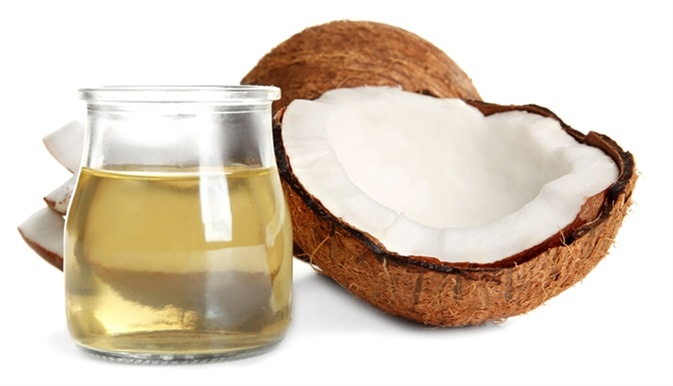Analyzing coconut oils can provide useful information regarding their characteristics. Gas chromatography, a pervasive analytic technique in different research/industrial laboratories, represents a fast and efficient method of analyzing coconut oils.

Image Credit: Coconut Oil / Shutterstock
What are the benefits and types of coconut oils
Coconut oil is a vegetable oil that is extracted from coconuts. Coconut oils are very popular as they have health and cosmetic benefits, and they come in two basic forms:
- Virgin coconut oil (VCO), which is extracted from fresh coconut kernels/meat and processed using natural means;
- Refined coconut oil (RCO), which is extracted from dried coconut kernels/meat and then processed by washing, bleaching, and deodorization.
Coconut oils are primarily used as food and cosmetic ingredients; therefore, methods to analyze the characteristics of coconut oils are important to ensure that they are of high quality.
VCO can reduce the levels of cholesterol, triglycerides, phospholipids, low-density lipoproteins, as well as increase the levels of high-density lipoproteins in the serum and tissues of individuals that regularly take it. Moreover, using VCO for extended periods of time also increases antioxidant levels.
The analysis of both RCO and VCO demonstrated that RCO contains a lower percentage of volatile matter, a lower moisture content, a lower free fatty acid profile, a higher monoglyceride and triglyceride content, as well as a higher peroxide value in comparison to VCO.
Deterioration of coconut oils is caused by chemical hydrolysis, chemical oxidation, microbial actions, enzymes, metal, heat, light, and air. RCO is known to be very stable making it less susceptible to deterioration. Conversely, the stability of VCO is less known, thus assumptions regarding its deterioration resistance cannot be made.
Analysis of coconut oils using gas chromatography
Gas chromatography procedure
Gas chromatography (GC) is used to separate and detect small gaseous compounds. The sample is either a gas or a liquid that is vaporized during the analysis. The sample is forced into a mobile phase where it is bound to a carrier gas (usually helium due to its low molecular mass). Pressure moves the mobile phase and analyte complex through the column and separation occurs when the analyte comes into contact with the stationary phase on the column (the stationary phase typically contains derivatives of polydimethylsiloxane). Different columns are used depending on the analyte, which can affect the accuracy and results of the analysis.
GC/MS Testing 100% Pure Essential Oils
The analyte can be detected after its separation from the mobile phase. Flame-ionization detection (FID) can detect the amount of carbon in a sample but destroys the sample in the process. FID involves burning the sample in a hot, hydrogen-air flame upon exiting the column. This produces carbon ions, and the current from these ions is measured using electrodes, giving ample information about the sample.
The GC equipment can be optimized by starting at a lower temperature during the FID, then gradually increasing it to a higher one during the analysis (e.g. starting at 120 oC and increasing at increments of 10 oC every minute until reaching 240 oC).
How does sample preparation affect gas chromatography analysis?
Before performing GC analysis of coconut oils, derivation has to be performed. This involves changing the oil into a new compound that is more suitable for the analysis purposes. Derivatization improves both the volatility and stability of the sample.
Derivatization methods that have been used on coconuts oils include base catalyzation, acid catalyzation, and boron trifluoride catalyzation. This is important, as the derivatization method used can have an effect on the results of the analysis.
Derivatization methods
During acid catalyzation derivatization, methanolic sulphuric acid is added to the sample and then heated. Sodium chloride and hexane are added once the mixture has cooled. Once settled, the top layer of the mixture is taken for GC analysis.
For base catalyzation derivatization, methanolic sodium hydroxide is added to the sample and then heated. Hexane is added after cooling. Once settled, the top layer is taken and methanolic hydrochloric acid is added. Once settled, the top layer is taken for GC analysis.
For boron trifluoride catalyzation derivatization, the sample is mixed with hexane, then sodium hydroxide is added and the obtained mixture is heated. Once cooled, methanolic boron trifluoride is added and the mixture is heated again. Once cooled, saturated sodium chloride is added. Once settled, the top layer is transferred into filtered sodium sulfate and this mixture is taken for GC analysis.
Research results describing the effects of these methods have demonstrated that base catalyzation derivatization has a shorter derivatization time and higher derivatization accuracy, making it a preferred method to use when analyzing coconut oils.
Further Reading